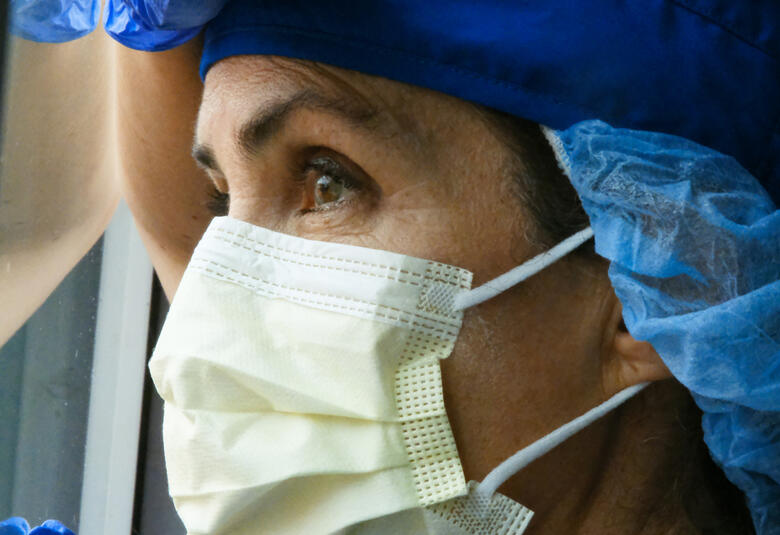Treatment resistant schizophrenia (TRS) is an on-going challenge in psychiatry. Too often available pharmacological therapies fail, either at the outset or during treatment, to completely control the debilitating symptoms experienced by patients. Clearly, a different approach to TRS is needed.
Non- or partial response to D2 antagonists = TRS
What is TRS? John Kane, New York, USA, explained that international treatment guidelines broadly agree that TRS is present when there is no significant improvement in target symptoms after treatment with at least two different antipsychotics given at adequate dose and duration. This definition assumes patients are fully compliant.
That there are over 21 million people with schizophrenia worldwide, 30% of whom fail to respond - and a further 30% of whom only partially respond - to the over 60 different therapies available, attests to the burden of disease.
Of over 21 million people with schizophrenia worldwide, 30% fail to respond - and a further 30% only partially respond to the different therapies available.
Of over 21 million people with schizophrenia worldwide, 30% fail to respond - and a further 30% only partially respond to the different therapies available
TRRIP consensus guidelines facilitate consistent research
Earlier identification and prompt pharmacological intervention can potentially change the course of the disease and improve outcomes. The Treatment Response and Resistance in Psychosis (TRRIP) working group has developed consensus guidelines on diagnosis and terminology that help facilitate more timely recognition of and consistent research into TRS.
What has become increasingly apparent is that there is clinical and pathophysiological heterogeneity within TRS; some patients never respond to treatment while in others resistance to treatment develops over time. Clearly this complicates matters and suggests there are different pathologies and, therefore, clinical pathways towards resistance.
Clinical and pathophysiological heterogeneity within TRS
However, potential clinical predictors of TRS are becoming apparent. These include use of antipsychotic combination therapy, recurrent relapses (where with each relapse the patient becomes less responsive to treatment and experience a worsening of clinical outcomes) and more that 30 days in psychiatric hospital in the year before diagnosis.
TRS – less urban myth than rural reality
Interestingly, the risk factors for schizophrenia that respond to D2 antagonists, such as urban living and male gender, are different to those for TRS. Typically, TRS patients are younger, live rurally, attain a primary educational level, have co-morbid personality disorders and/or a paranoid subtype and have previously received antipsychotics and antidepressants.
Risk factors factors for schizophrenia that responds to D2 antagonists, such as urban living and male gender, are different to those for TRS
Novel neurobiologies and hypotheses
If available antipsychotic agents aren’t working in TRS, this suggests that the neurobiology underlying the condition are novel or in some way different to those currently accepted, Oliver Howes, London, UK, explained.
Normodopaminergic profiles correlates with TRS non-response?
One hypothesis supported by imaging data suggests that patients who respond to D2 antagonists have a hyperdopaminergic profile - characterized by elevated striatal dopamine synthesis and release capacity and greater density of dopaminergic synapses. This contrasts with patients who have a normodopaminergic profile that leaves them unable to respond to dopamine D2 blocking drugs and who likely are TRS non-responders.
Patients with normodopaminergic profiles cannot respond to D2 antagonists and are likely TRS non-responders.
Patients with normodopaminergic profiles cannot respond to D2 antagonists and are likely TRS non-responders
Dopamine supersensitivity psychosis and treatment resistance
A second hypothesis for which supporting animal and human data are available suggests that dopamine supersensivity psychosis (DSP) develops with long-term use of antipsychotics. Prolonged blockade of the D2 receptors may induce upregulation or alter their affinities thereby creating receptor supersensitivity. Thus, giving increased doses of D2 antagonists over time, as happens in patients who initially respond to antipsychotics but in whom therapeutic benefit diminishes, will eventually lead to treatment resistance.
Dopamine supersensivity psychosis (DSP) likely develops in TRS patients who become treatment- resistant
Dopamine supersensivity psychosis (DSP) likely develops in TRS patients who become treatment- resistant
Many and varied alternative hypotheses
Several other hypotheses have been proposed including abnormalities in other systems, including glutamate, neuroinflammation, brain connectivity and neurodegeneration. In particular, elevated glutamate levels and IL-6 have been detected in patients with TRS
Genetic polymorphisms and substance abuse may also be involved in TRS.
In all likelihood there are probably several pathways to TRS and they are not mutually exclusive. After all, as Dr Howes stated, if a patient is normodopaminergic, something else must be causing their TRS.
Suboptimal approved option in TRS despite different MoA
Currently, only a single drug is approved for use in TRS albeit as third line treatment. However, as James McCabe, London, UK, explained, its use is often delayed due to clinicians’ reluctance to use it due to the need for regular blood tests and concerns over its safety and tolerability. Indeed, some go so far as to use non-evidence-based treatments in preference, including switching, combination therapies and increased dosages.
Unlike currently used antipsychotics, the approved therapy’s mode of action is distinct
One feature of the approved drug is that, unlike currently used antipsychotics, its mode of action is distinct. However, if this approved option is suboptimal, it is clear there is great need for others that are not. In the meantime, clinicians should be encouraged to consider this agent more often – even as second line therapy in patients who have definitive TRS – and definitely sooner than is currently happening.
Unlike currently used antipsychotics, the approved therapy’s mode of action is distinct.
The report is from an ECNP satellite symposium sponsored by Lundbeck.
Our correspondent’s highlights from the symposium are meant as a fair representation of the scientific content presented. The views and opinions expressed on this page do not necessarily reflect those of Lundbeck.





